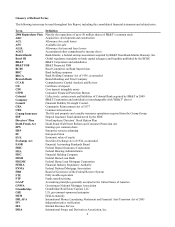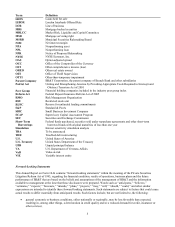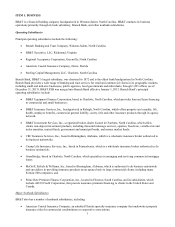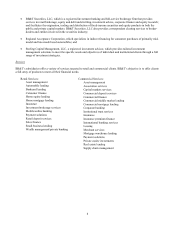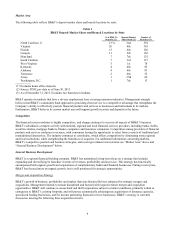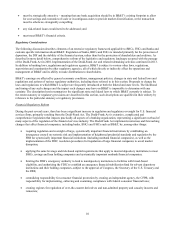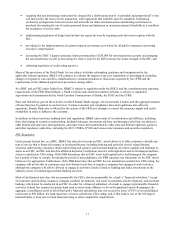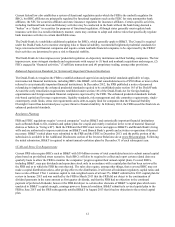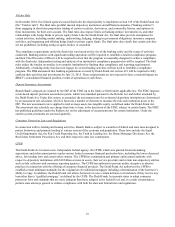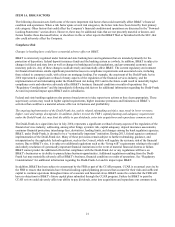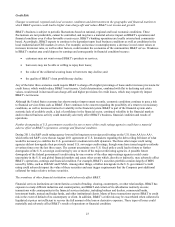BB&T 2013 Annual Report Download - page 14
Download and view the complete annual report
Please find page 14 of the 2013 BB&T annual report below. You can navigate through the pages in the report by either clicking on the pages listed below, or by using the keyword search tool below to find specific information within the annual report.
14
Payment of Dividends; Capital Requirements
The Parent Company is a legal entity separate and distinct from Branch Bank and its subsidiaries. The majority of the Parent
Company’s revenue is from dividends paid by Branch Bank. Branch Bank is subject to laws and regulations that limit the
amount of dividends it can pay. In addition, BB&T and Branch Bank are subject to various regulatory restrictions relating to
the payment of dividends, including requirements to maintain capital at or above regulatory minimums, and to remain “well-
capitalized” under the prompt corrective action regulations summarized elsewhere in this section. Federal banking regulators
have indicated that banking organizations should generally pay dividends only if (1) the organization’s net income available
to common shareholders over the past year has been sufficient to fully fund the dividends and (2) the prospective rate of
earnings retention appears consistent with the organization’s capital needs, asset quality and overall financial condition.
BB&T’s 2014 capital actions will depend on the FRB’s review of BB&T’s 2014 capital plan, which was submitted in
January 2014.
North Carolina law states that, provided a bank does not make distributions that reduce its capital below its applicable
required capital, the board of directors of a bank chartered under the laws of North Carolina may declare such distributions as
the directors deem proper.
Capital Requirements
Information related to certain capital ratios is shown in the following table:
Table 2
Capital Adequacy Ratios
December 31, 2013
Regulatory
Minimum
Regulatory
Minimum to
be Well-
Capitalized BB&T Branch Bank
Risk-based capital ratios:
Tier 1 capital 4.0 % 6.0 % 11.8 % 11.9 %
Total risk-based capital 8.0 10.0 14.3 13.4
Tier 1 common capital N/A N/A 9.9 9.7
Tier 1 leverage capital ratio 3.0 5.0 9.3 9.4
The federal banking agencies, including the FRB and the FDIC, are required to take “prompt corrective action” in respect of
depository institutions and their BHCs that do not meet minimum capital requirements. The law establishes five capital
categories for insured depository institutions for this purpose: “well-capitalized,” “adequately capitalized,”
“undercapitalized,” “significantly undercapitalized” and “critically undercapitalized.” To be considered “well-capitalized”
under these standards, an institution must maintain the ratios shown above and must not be subject to any order or written
directive to meet and maintain a specific capital level for any capital measure.
Federal law also requires the bank regulatory agencies to implement systems for “prompt corrective action” for institutions
that fail to meet minimum capital requirements within the five capital categories, with progressively more severe restrictions
on operations, management and capital distributions according to the category in which an institution is placed. Additionally,
failure to meet capital requirements may cause an institution to be directed to raise additional capital. Federal law further
mandates that the agencies adopt safety and soundness standards generally relating to operations and management, asset
quality and executive compensation, and authorizes administrative action against an institution that fails to meet such
standards.
In addition to the “prompt corrective action” directives, failure to meet capital guidelines may subject a banking organization
to a variety of other enforcement remedies, including additional substantial restrictions on its operations and activities,
termination of deposit insurance by the FDIC and, under certain conditions, the appointment of a conservator or receiver.


